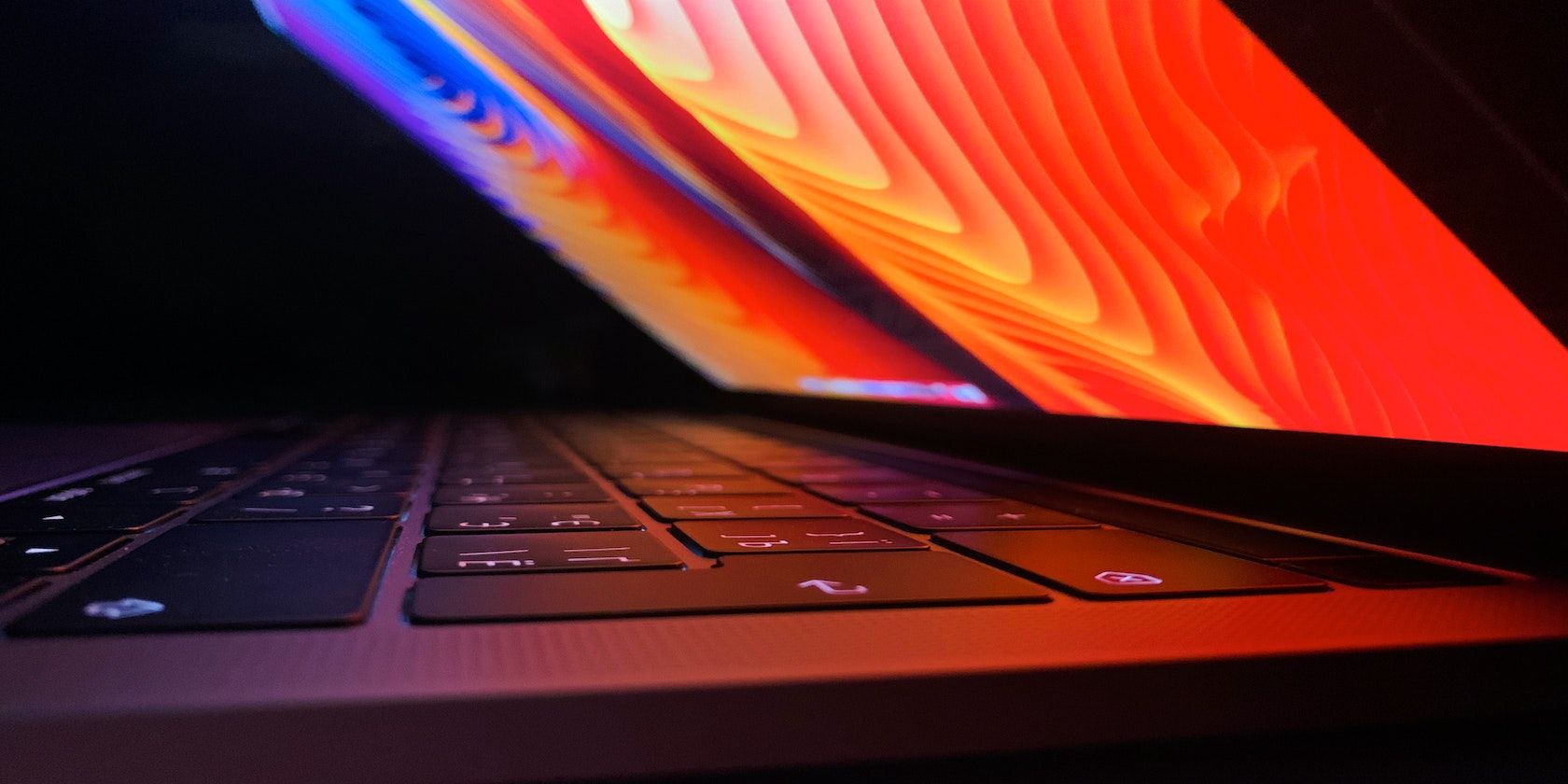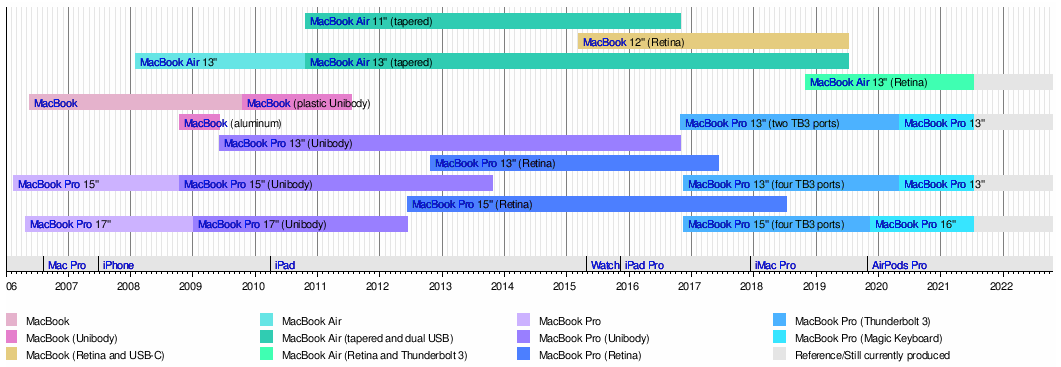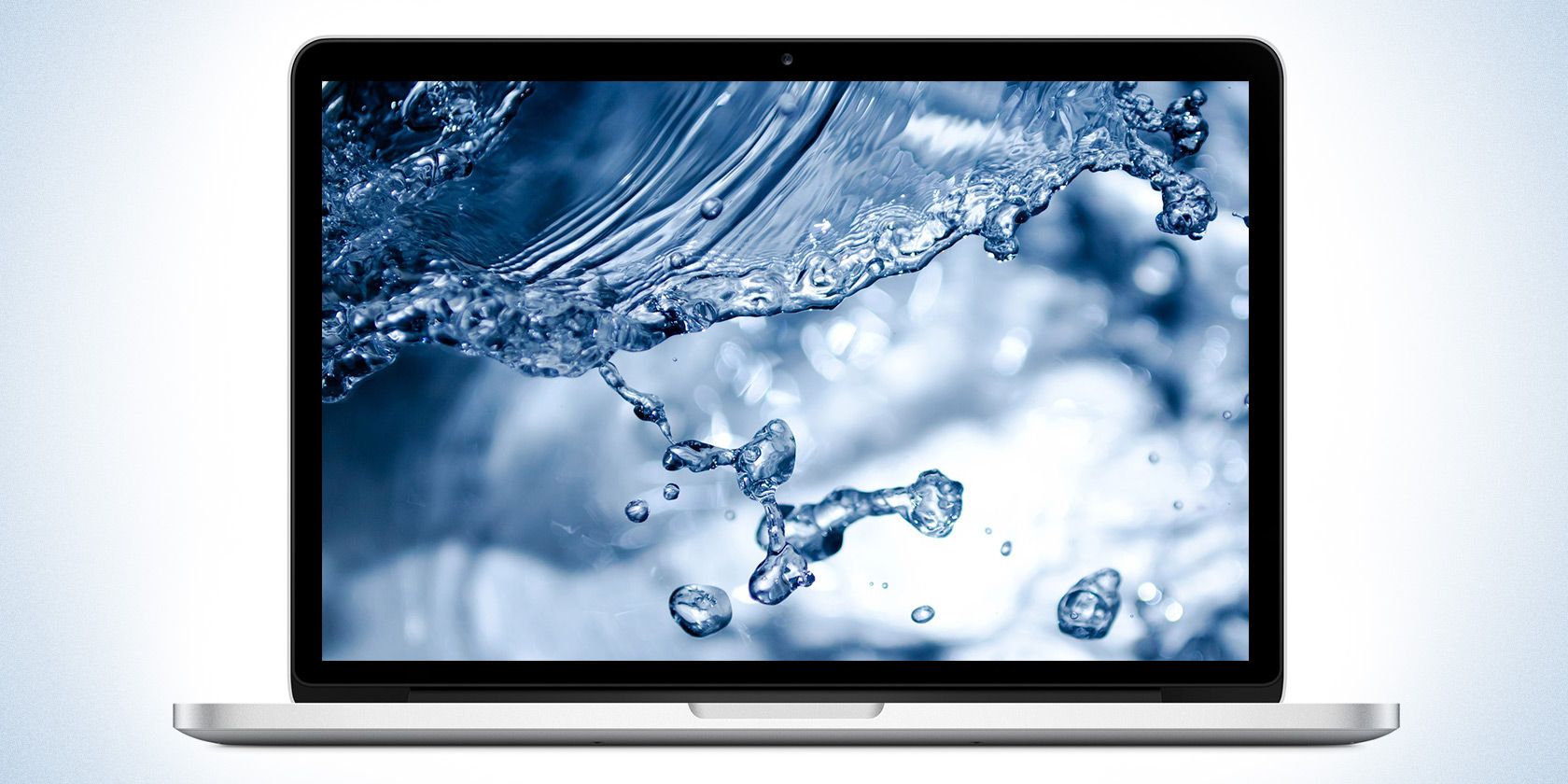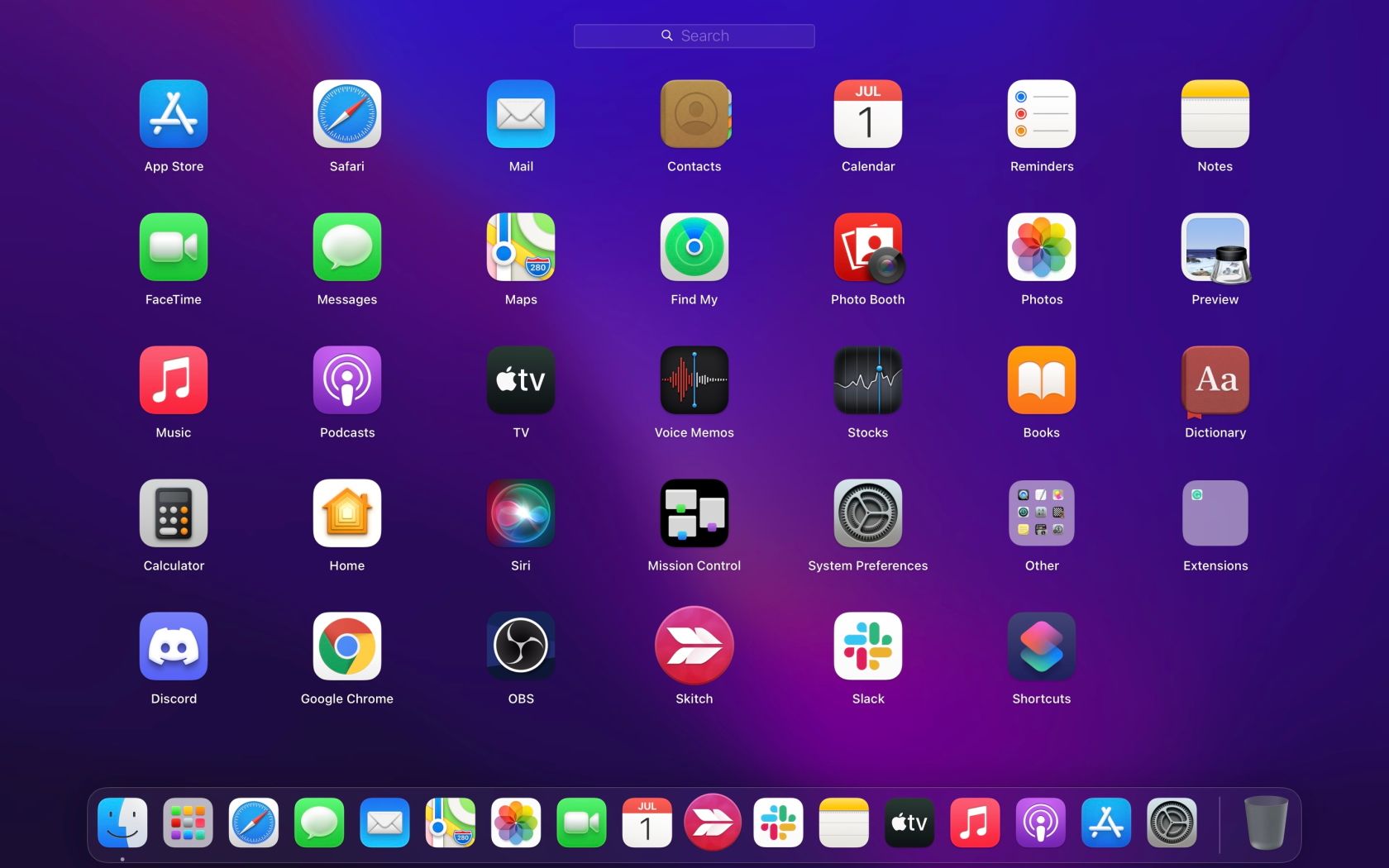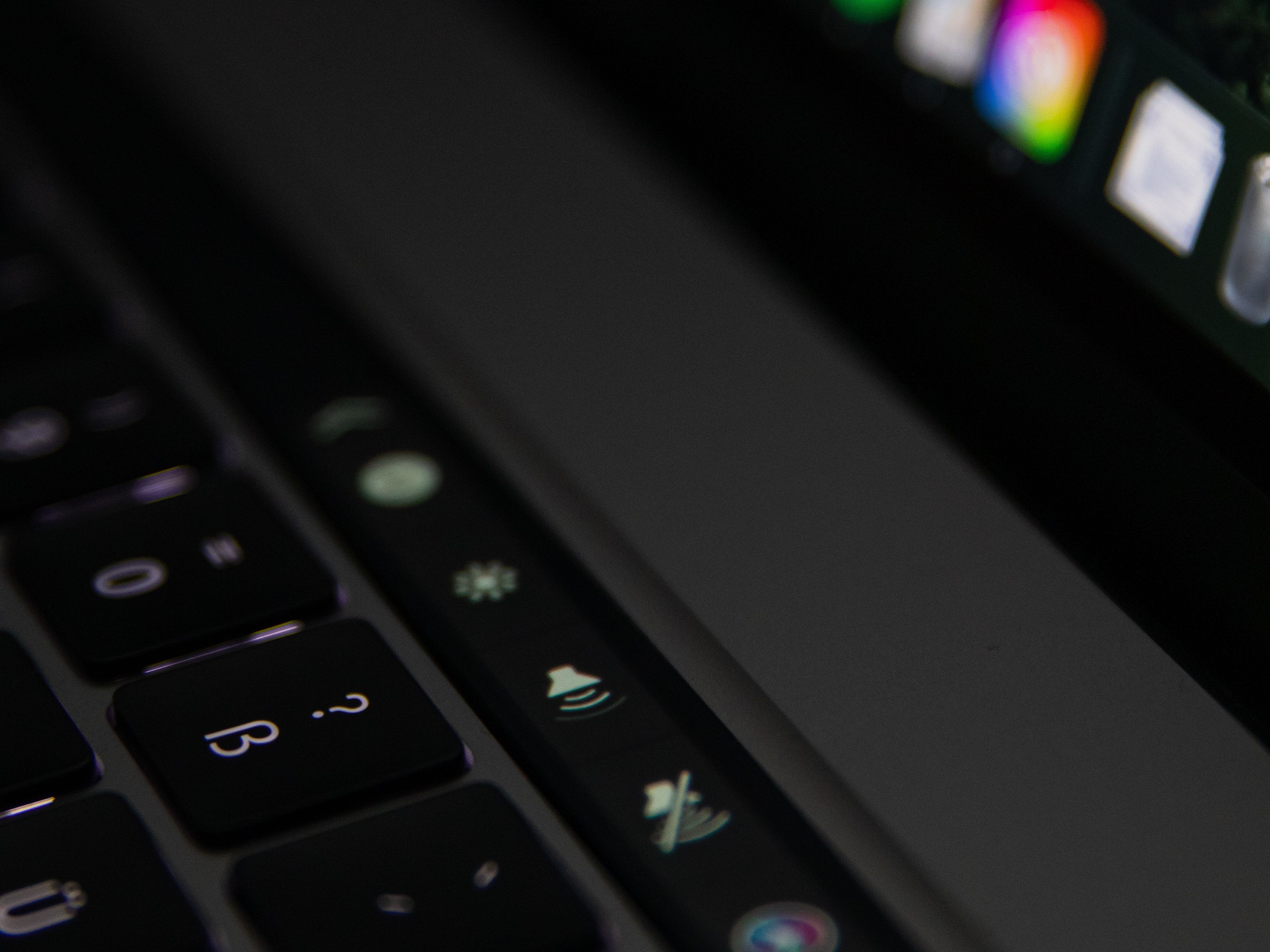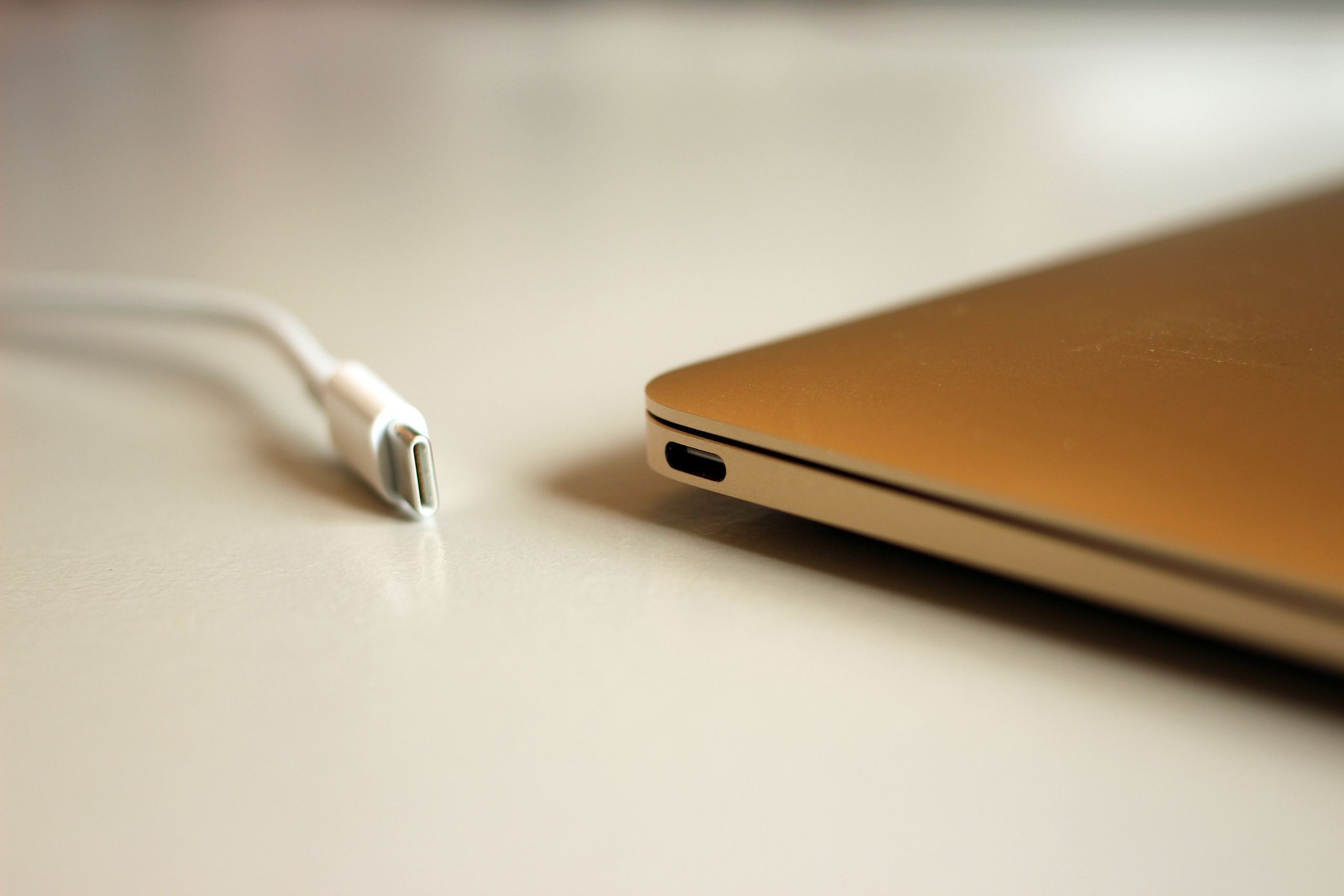The MacBook Pro is one of Apple's few products in the slimmed-down Mac line. It's been the choice of many professionals for years, but how has it changed since its inception?
Let's look back at the MacBook Pro to understand its origins, the changes Apple made over time, and how it's remained so popular.
Introduction to the MacBook Pro
Introduced in 2006 and based off Apple's innovative PowerBook G4 laptop, the MacBook Pro is designed to be what its name says. This laptop is a high-end model designed for professionals and people who need an extra bit of punch on their device.
It sits above the consumer-focused MacBook Air models, and is currently sold with 13- and 16-inch screens, 15- and 17-inch versions were sold from January 2006 to January 2020, and April 2006 to June 2012, respectively.
Now up to its sixth generation, and with rumors of a redesigned MacBook Pro sixth generation spreading, the MacBook Pro has been one of Apple's most consistent devices in its design and technology. Let's see how.
Improvements Made After the PowerBook G4
The MacBook Pro model that Apple released directly following the PowerBook G4—another groundbreaking Macintosh laptop—made some large optimizations in terms of speed and usability. By many reports, the Pro doubled or tripled the speed of the G4 in areas of video processing and rendering, gaming, and Universal Application operation.
With a new dual-core Intel processor powering the device, as well as features like an integrated iSight webcam, a brand new magnetic (or MagSafe in Mac-speak) power connector, and improved wireless internet range, there were many positives.
The thinness of this new model did bring some drawbacks, however. Even with a slower optical drive, battery life that was only on par with the G4, and no FireWire port, it was still a major step forward for performance-hungry users. MacBook Pro models in 2008 would introduce a unibody design, a trackpad where the entire surface was clickable, more powerful Intel i5 and i7 processors, and Thunderbolt connectors.
2012—the year of the most successful and longstanding model—would see an even thinner device equipped with solid-state storage and an HDMI port, as well as a more vibrant Retina display. If you're interested, check out our 2012 article on the revamped MacBook Pro for an idea of reactions at the time.
2016's revision saw the introduction of USB-C, as well as the controversial Touch Bar that attempted to add further functionality to the top row of keys. 2019 and 2020 saw minimal improvements, with the implementation of the Apple M1 "system-on-a-chip" processor the most significant.
What Makes the MacBook Pro So Special?
Simply put, the Pro's power and design make it a hugely useful device for both personal and professional purposes. It's powerful enough to run demanding apps like Photoshop with great speed, and its display is beautiful and rich. The trackpad is easy to use, while the whole laptop is thin, portable, and built well.
Plus, it has the benefits of other Mac computers. The user interface of macOS is streamlined and effective, and it's well-integrated with the entire suite of Apple products.
On top of all this, the value of the MacBook Pro is second to none when weighing it up against other laptops that share the same power, flexibility, and utility. We touch on this below, but weighing up against Windows devices, you would have to convert to a desktop build to improve on the Pro at this price range.
Overall, everything on the MacBook Pro just looks, sounds, and functions really well. A pretty straightforward argument that helps to outline the long and decorated history of this model, right?
MacBook Pro Criticisms From Over the Years
Of course, no device is perfect. Sparing the age-old debate of Mac vs. PC, several criticisms about the MacBook Pro bring it back down to Earth. From overarching thematic criticisms to specific technical problems, critics have been harsh in breaking down the Pro from its launch in 2006 up till today.
The first generation in 2006 was mainly faulted for underclocking the graphics card, and running too hot in temperature (especially pertinent for laptop users working on their laps). This temperature critique continued through to the second generation, which was the first unibody model.
The ports of the second-generation MacBook pro model were also knocked, particularly the implementation of Mini DisplayPort instead of the more popular HDMI output. Ports and connectivity have always been an issue for Apple. This was highlighted with the removal of the headphone jack for iPhone, and the rapid replacement of traditional ports on Mac models with only USB-C .
By the third generation in 2012, which was the Pro model with the most sales, Apple stripped more features away. This included the loss of the optical drive and Ethernet port. While some were unhappy with this choice, others saw it as a quantum leap forward, considering the general trend away from wired internet and CDs/DVDs.
Continuing on with this trend, the fourth generation of MacBook Pro saw a full adoption to USB-C for its ports, as well as a pretty significant price hike. But this time, Apple possibly leaped too far forward.
Some found it frustrating that they had to use a dongle just to plug USB-A devices into the laptop's USB-C ports. This quote from The Verge's review summarizes it well: "using [the new MacBook] is alienating to anyone living in the present. I agree with Apple's vision of the future. I'm just not buying it today." The Touch Bar also missed the mark with some users.
Late in 2020, the fifth generation of the Pro was announced. Aside from the integration of Apple's new M1 chip, the improvements were minor. For this reason, as well as the fact that the market had caught up to Apple's leaps by this point, criticisms were few and neutral.
2021 should see a sixth generation that is rumored to include a redesign; it will be interesting to see what further developments Apple makes with it.
Despite Critiques, the MacBook Pro Has Been Highly Successful
Though it released over 15 years ago, the MacBook Pro is still breaking records in sales volume. According to Apple's financial records, in its financial year ending September 2020, the Pro made up $9 billion worth of sales, out of $28.6 billion for all Mac devices. That's almost a third of all sales.
Considering the Product Life Cycle, the survivability of this model is quite impressive. It appears that the combination of future-focused designs, usability, performance, technological advancements, and the much-trusted Apple insignia have allowed the MacBook Pro Pro to ebb and flow successfully in the market.
Over its lifetime, much has changed, but users—like myself—still believe the MacBook Pro is one of the best.

